Why did a white bloom appear on the leaves of the rose and what to do?
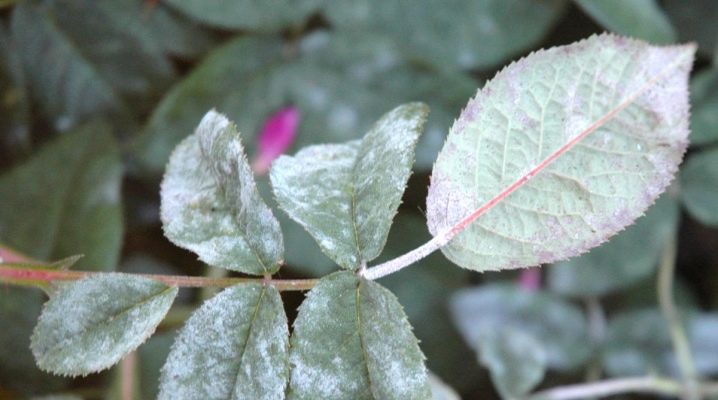
Diseases and pests affect roses of any varieties - climbing, and hybrid tea, and remontant, and any others. And it doesn't matter whether they grow indoors in a pot or on the street. For what reason this or that disease may arise, how to treat them and what to do with harmful insects, we will tell you in our article.

Treatment of diseases
Powdery mildew
Powdery mildew is one of the most common and dangerous fungal diseases of rose bushes., due to which a white bloom forms on the leaves, stems, buds, thorns and young shoots of a garden plant. Usually this disease is activated at the end of spring days, in summer or closer to autumn in conditions of insufficient lighting, thickened plantings, sharp temperature jumps and a lack of calcium, especially when it comes to climbing rose
The fungus, which is the causative agent of powdery mildew, is transferred from diseased plantings to healthy winds, insects, which is especially typical for outdoor plants growing in open ground, as well as garden tools that have not been disinfected before use.
The fungus hibernates in cracks in the bark, under old foliage, and when favorable conditions come, the fungus begins to precipitate crops again.
The white plaque formed on the plant sites is easily erased with a finger, and therefore some people prefer to ignore it, which is not worth doing: so you just start the situation, because the plaque will reappear on the leaf, it will begin to noticeably increase in size, capturing a large area of the plant. It inhibits the process of photosynthesis, due to which the affected areas begin to fade, turn yellow and fall off. And if new leaves appear in such a plant, then they curl up and look, as a rule, ugly, since they cannot fully develop.
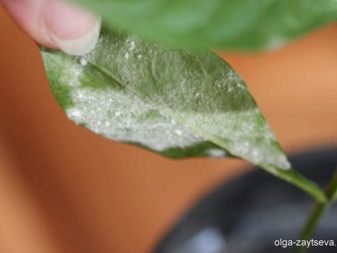
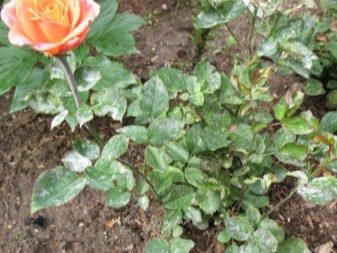
If a rose is sick with powdery mildew, then it can quickly die if you do not take action, and the disease itself will spread to neighboring shrubs.
To get rid of this fungal disease, it is necessary to eliminate all affected areas of the plant, treat it with Bordeaux liquid or copper oxychloride solution, tear off the lower leaves that touch the soil, establish a ventilation regime when it comes to greenhouse conditions, and watering, avoiding waterlogging of the soil. The rose can also be treated with fungicidal agents such as Topaz, Skor and Previkur, especially when it comes to advanced cases. In addition, during this period, it will be better to abandon fertilization.
The very process of treating this disease is very difficult, and therefore its occurrence is easier to prevent. To do this, the plant must be regularly cut to ensure full circulation of air masses, carry out preventive treatments, eliminate weeds and establish an irrigation regime.
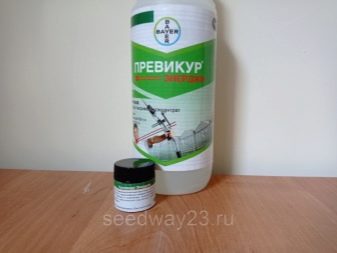

Downy mildew
Downy mildew is in many ways similar to the usual one. This disease is activated in high humidity and heat. Unlike real powdery mildew, false one manifests itself in a slightly different way: plaque in this disease is formed from the lower part of the leaf blade, which makes it more difficult to notice the symptoms in a timely manner. In the future, the leaves, which have turned white from plaque, are deformed, turn brown or reddish.
You need to treat this disease as soon as possible in order to have time to save the rose bush. To do this, its affected areas must be eliminated by burning, but this course of action is only suitable if the disease was noticed at the early stages of its development, otherwise most of the bush will have to be destroyed. In addition, with this disease, it is also required to carry out treatment with drugs with a high copper content - for example, Bordeaux liquid or copper sulfate. Planting is required to be sprayed at least three times with an interval of 10 days.
For greater confidence, treatment with special fungicidal preparations can be combined with spraying with homemade solutions, for example, based on mustard, garlic, ash or soda.
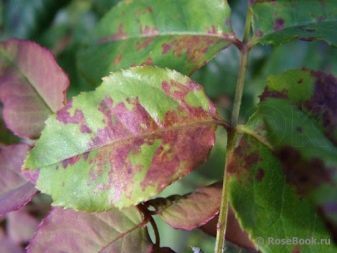

Gray rot
Gray rot appears, or rather, fungi, which are the causative agents of this disease, as a rule, during the winter season on plant debris. Favorable conditions for the formation of this disease are a large amount of nitrogen fertilizers in the soil, a high level of humidity and cool weather, as well as excessive thickening of the plantings, which interferes with the full circulation of air masses.
You can understand that the rose bush was infected with this particular disease by a number of signs: so, on the foliage, buds, trunk and shoots, a fluffy plaque of serous color begins to form, which is accompanied by brownish rotten specks. With the development of the disease, the leaves turn yellow.
You can fight this disease, especially if you managed to notice its first symptoms in time. So, first you need to eliminate all the affected areas of the rose bush and stop flooding the plant, because an abundant amount of moisture in such cases will only be harmful.
At the initial stage, it is quite possible to resort to the use of folk remedies, but in advanced cases it is recommended to use stronger and more effective drugs, namely "Fundazol" or Bordeaux liquid.
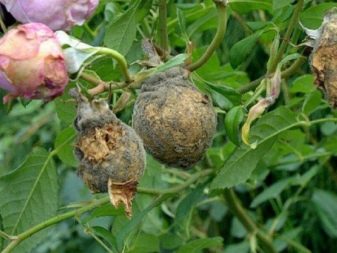
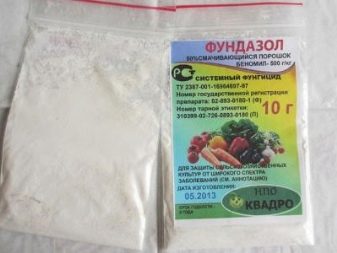
Pest control
The cause of the appearance of a whitish, brownish or serous plaque in the areas of a rose bush can also be gluttonous insects, which often leave behind only streaks or holes with holes. It is also necessary to fight them, because the parasites not only eat the plant, thereby significantly reducing its immunity and resistance to various kinds of diseases, but also infect it with fungi and viruses.
Usually, pests begin to attack at the beginning of the growing season. Some of them attack the root system of the plant, while others prefer to feast on the ground part of it.
Usually, if a brownish bloom has appeared on the roses, then this indicates that thrips are attacking the rose. These are small insects, the size of which does not exceed 14 millimeters. They are fast, have wings and, as a rule, are distinguished by their brown, greenish, gray or black coloring when it comes to adults. The larvae are usually inconspicuous: they are either gray or light yellow. Such coloring of the larvae causes difficulties, because it becomes very difficult to notice them. Otherwise, they are no different from adults, except for the absence of wings.
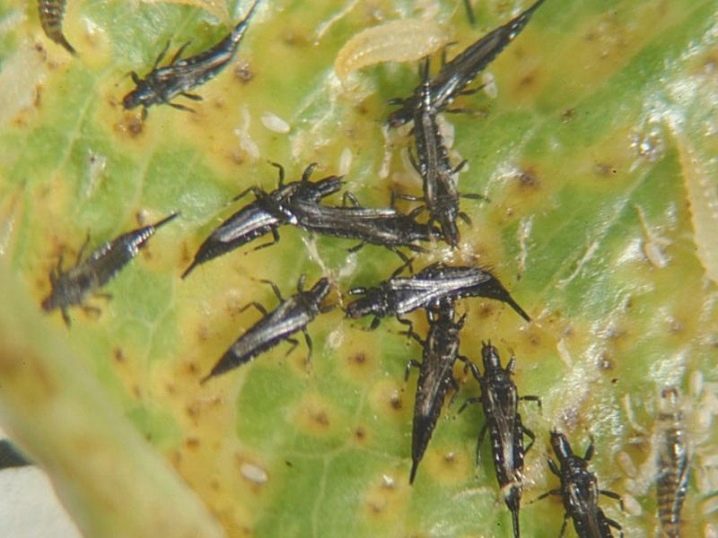
These parasites infect plantings with fungal diseases, and also actively suck cell sap from the plant, which is why it begins to become covered with colorless spots, which grow over time, increasing in size, and plaque appears. Then holes begin to form on the leaves, as some of their parts begin to die off, and the pink buds die. It is recommended to fight the parasite with chemicals - this is how you can save the plant. Gardeners especially recommend Aktellik, Karbofos and Decis.
Before using them, you must carefully read the instructions, which are usually located on the back of the package.
Another insect that causes the appearance of soot plaque and not only is the scale insect, which actively affects not only street, but also indoor plantings.This parasite looks like a small beetle no more than 4 millimeters in size, with a rounded, elongated or pear-shaped body that has a brownish or brown color. The appearance of this pest is evidenced not only by a sticky plaque, but also by the arrest of plant growth, as well as the appearance of reddish blotches on its parts. You can fight this parasite by treating with a solution based on tar soap. You can also use chemicals such as Aktara or Actellic.

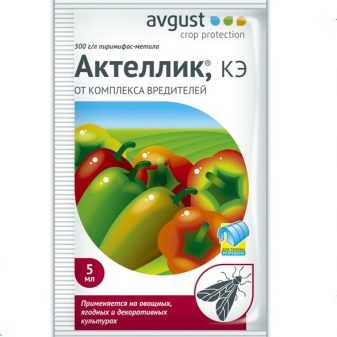
Prevention measures
Compliance with preventive measures helps to prevent the occurrence of this or that ailment, or to prevent its development in the early stages.
- So, first you need to inspect the rose bushes on an ongoing basis. If you find symptoms of the disease, then the affected areas need to be eliminated as soon as possible, and the bush itself and the plants growing next to it should be treated with a special fungicide.
- Do not forget about high-quality care, which includes feeding, watering and pruning shrubs - all this helps to strengthen the plant and its immunity, which allows it to more easily endure attacks from diseases and parasites.
- At the end of the season, remove old leaves, because it is under them that parasites and harmful fungi often hibernate, which are activated when the weather conditions become most favorable for them.


































































































The comment was sent successfully.